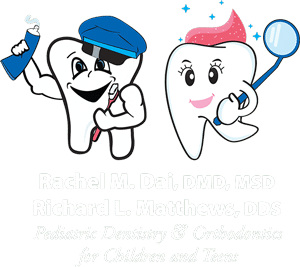The Main Principles Of Legacy Orthodontics
The Main Principles Of Legacy Orthodontics
Blog Article
The 5-Minute Rule for Legacy Orthodontics
Table of ContentsGetting My Legacy Orthodontics To WorkSome Ideas on Legacy Orthodontics You Need To KnowThe Greatest Guide To Legacy OrthodonticsSome Ideas on Legacy Orthodontics You Need To KnowLegacy Orthodontics - Questions
At Advanced Orthodontics, we offer individuals with a holistic treatment experience. In addition, we use flexible therapy schedules, flexible payment choices and an enjoyable, enjoyable experience. invisalign. Phone call ( 480) 357-4900 today to find out more and schedule a visit.An orthodontist is a dental professional trained to detect, prevent, and deal with teeth and jaw abnormalities. Orthodontists function with people of all ages, from children to grownups.
Malocclusion, or misaligned teeth, can bring about oral problems, consisting of dental caries, periodontal condition, and hard or painful chewing. Yet not everybody is born with straight teeth. If you have a negative bite or huge areas in between your teeth, you may desire to consult a dentist specializing in orthodontic care.
The Buzz on Legacy Orthodontics
( Image Credit Score: DigitalVision/Getty Images) Orthodontists use taken care of and removable oral gadgets, like dental braces, retainers, and bands, to alter the setting of teeth in your mouth. Orthodontic therapy is for oral abnormalities, including: Misaligned teethBite troubles, like an overbite or an underbiteCrowded teeth or teeth that are too far apartJaw misalignmentThe objective of orthodontic therapy is to improve your bite.
While you may assume of orthodontists as primarily for kids or teens that require dental braces, they can correct dental issues at any kind of age. Orthodontists go to college, oral college, and orthodontic school.
, however not all dental experts are orthodontists. They focus on 2 locations: Exactly how to appropriately and securely relocate teeth Exactly how to appropriately assist advancement in the teeth, jaw, and faceOnce an orthodontist has finished training, they have the alternative to end up being board accredited.
Legacy Orthodontics for Beginners
Misalignment, or malocclusion, is one of the most usual reason individuals see an orthodontist. It is hereditary and is the outcome of dimension differences in between the upper and lower jaw or in between the jaw and teeth. Malocclusion leads to tooth congestion, an irregular jaw, or irregular bite patterns. Malocclusion is normally treated with: Your orthodontist affixes steel, ceramic, or plastic square bonds to your teeth.
If you have just minor malocclusion, you might be able to use clear dental braces, called aligners, rather of typical dental braces (https://www.indiegogo.com/individuals/38096627). Some people need a headwear to help relocate teeth into line with stress from outside the mouth. After braces or aligners, you'll need to use a retainer. A retainer is a custom-made device that maintains your teeth in position.
They can produce extra area in the mouth without having to draw teeth. Orthodontists use cables, medical screws, or plates to support your jaw bone.
You might need to see an orthodontist if you have: Crowding or not adequate room for all of your teethOverbite, when your upper teeth come by your bottom teethUnderbite, when your base teeth are too far forwardSpacing or issues with gapsCrossbite, which is when your upper teeth fit behind your bottom teeth when your mouth is closedOpen bite or a vertical space in between your front bottom and top teethMisplaced midline, when the center of your base and upper teeth do not line up Correcting a dental malocclusion can: Make attacking, eating, and speaking easierImprove the balance of our face and your overall appearanceEase pain from temporomandibular joint problemsSeparate your teeth and make them easier to cleanse, helping avoid tooth degeneration or dental caries It's commonly a dental practitioner who first notifications misaligned teeth during a routine test.
The Ultimate Guide To Legacy Orthodontics

Throughout your first orthodontic consultation, you'll likely have: An oral examPhotos taken of your face and smileDental X-raysPanoramic (360 level) X-rays of your face and headImpressions to create molds of your teethThese tests will aid your orthodontist recognize just how to wage your treatment. leesburg orthodontics. An orthodontist is a dental professional that's had training to treat your teeth and jaw
Orthodontists might execute surgery, exams,X-rays,and even more to assist you achieve a much more comfy, much healthier smile. An orthodontist is concentrated on your bite, so something like a broken tooth would certainly be managed by a dental professional. Orthodontists are dental experts but not all dentists are orthodontists. Orthodontists are focused on your bite, or the means your teeth fit with each other, and the straightness of your teeth.
Ever asked yourself exactly how celebrities always appear to have completely aligned teeth? The solution frequently exists in the proficient hands of an orthodontist. What specifically does an orthodontist do? Orthodontists are oral specialists that focus on correcting abnormalities in the teeth and jaws. Their competence goes past just creating a stunning smile; it encompasses boosting your total dental health and feature.
The 30-Second Trick For Legacy Orthodontics

While dental braces are the most typically identified orthodontic therapy, orthodontists have a varied toolkit at their disposal. The specific method selected relies on the extent of the case, the client's age, and private preferences. These reliable dental braces make use of a system of braces adhered to the teeth and attached by cords.
Clear aligners, like Invisalign, are a preferred choice for patients seeking a more discreet therapy option. These removable trays are tailor-made to progressively move the teeth's position. Headwear may be used in conjunction with braces or aligners to apply added targeted pressures, specifically for fixing jaw disparities. In instances of narrow jaws, palatal expanders can be utilized to produce space for appropriate tooth positioning.
Report this page